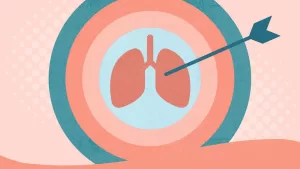Lung Cancer Treatment Options: Surgery, Chemotherapy, and More
When faced with a lung cancer diagnosis, understanding your treatment options is crucial. As you navigate this challenging journey, you’ll encounter various approaches to combating the disease. From surgical interventions to chemotherapy regimens, each option offers unique benefits and considerations. Your medical team will work closely with you to determine the most effective course of action based on the type and stage of your cancer, as well as your overall health. In this comprehensive guide, we’ll explore the primary treatment modalities available for lung cancer patients, empowering you with the knowledge to make informed decisions about your care and take an active role in your recovery process.
What stage of lung cancer requires surgery?
Lung cancer surgery is typically recommended for early-stage non-small cell lung cancer (NSCLC). According to the American Cancer Society, surgery is a common treatment option for stage 0, stage I, and some stage II cancers. For stage 0 NSCLC, surgery alone may suffice, while stages I and II often require additional targeted therapy for lung cancer or chemotherapy to prevent recurrence.
When is surgery used for lung cancer?
Lung cancer surgery is typically considered for early-stage non-small cell lung cancer (NSCLC) when the tumor is localized. It offers the best chance for a cure. The type of surgery depends on the tumor’s size, location, and the patient’s lung function. Options range from removing a small wedge of tissue to an entire lung. Targeted therapy for lung cancer may be used before or after surgery to improve outcomes.
Types of surgery for lung cancer
Common surgical procedures
Lung cancer surgery options include lobectomy (removing one lobe), pneumonectomy (entire lung removal), and wedge resection (small section removal). The choice depends on cancer size, location, and spread. Minimally invasive techniques like video-assisted thoracoscopic surgery (VATS) may be used for early-stage cancers, offering quicker recovery. Targeted therapy for lung cancer often complements surgical approaches.
How surgery for lung cancer is done
Lung cancer surgery is performed through two main approaches: thoracotomy and minimally invasive techniques. Thoracotomy involves a large incision along the ribs, while minimally invasive methods use smaller incisions and specialized tools. The type of procedure depends on the cancer’s location and stage. Common surgeries include lobectomy, segmentectomy, and pneumonectomy. Targeted therapy for lung cancer may be used in conjunction with surgery for optimal outcomes.
Possible side effects of lung cancer surgery
Lung cancer surgery can lead to various complications. Pain, weakness, and shortness of breath are common post-operative symptoms. Patients may experience difficulty moving, coughing, and breathing deeply during recovery. In rare cases, more severe complications like blood clots or infections can occur. It’s crucial to discuss potential risks and targeted therapy for lung cancer with your healthcare team before undergoing any procedure.
What to Expect After Lung Cancer Surgery
After lung cancer surgery, expect to feel tired and weak for several weeks. You’ll likely stay in the hospital for 2-7 days, with close monitoring. Pain management is crucial, and you’ll be encouraged to move around as soon as possible. Recovery can take months, so gradually increase your activity levels. Watch for potential complications like infections or breathing difficulties. Targeted therapy for lung cancer may be discussed during follow-up appointments.
Lung cancer chemotherapy treatment options
Chemotherapy plays a crucial role in lung cancer treatment. It can be used before surgery to shrink tumors, after surgery to eliminate remaining cancer cells, or as the primary treatment for advanced cases. Common drugs for lung cancer chemotherapy include cisplatin, carboplatin, and paclitaxel. Targeted therapy for lung cancer, such as EGFR inhibitors, may also be combined with chemotherapy for enhanced effectiveness.
Targeted therapy for lung cancer
Targeted therapy for lung cancer is a precision treatment that attacks specific abnormalities in tumor cells. Unlike traditional chemotherapy, it minimizes damage to healthy cells, reducing side effects. Biomarker testing identifies genetic mutations like EGFR, ALK, and ROS-1, allowing doctors to prescribe appropriate targeted drugs. These therapies interrupt cancer cell growth and function, offering a more personalized approach to lung cancer treatment.
Can you live a long time with lung cancer?
While lung cancer is aggressive, survival rates are improving. Early detection through screening can dramatically increase long-term survival, with some patients living 20+ years post-diagnosis. The 5-year survival rate for localized non-small cell lung cancer is 65%, highlighting the importance of early diagnosis. Targeted therapy for lung cancer and lung cancer surgery options continue to advance, offering hope for extended lifespans.
Disclaimer: The content for this article is for informational purposes only and is not a substitute for professional medical advice, diagnosis, or treatment. Always consult your oncologist with any questions regarding a medical condition. Do not disregard medical advice or delay seeking it based on information from this site.

